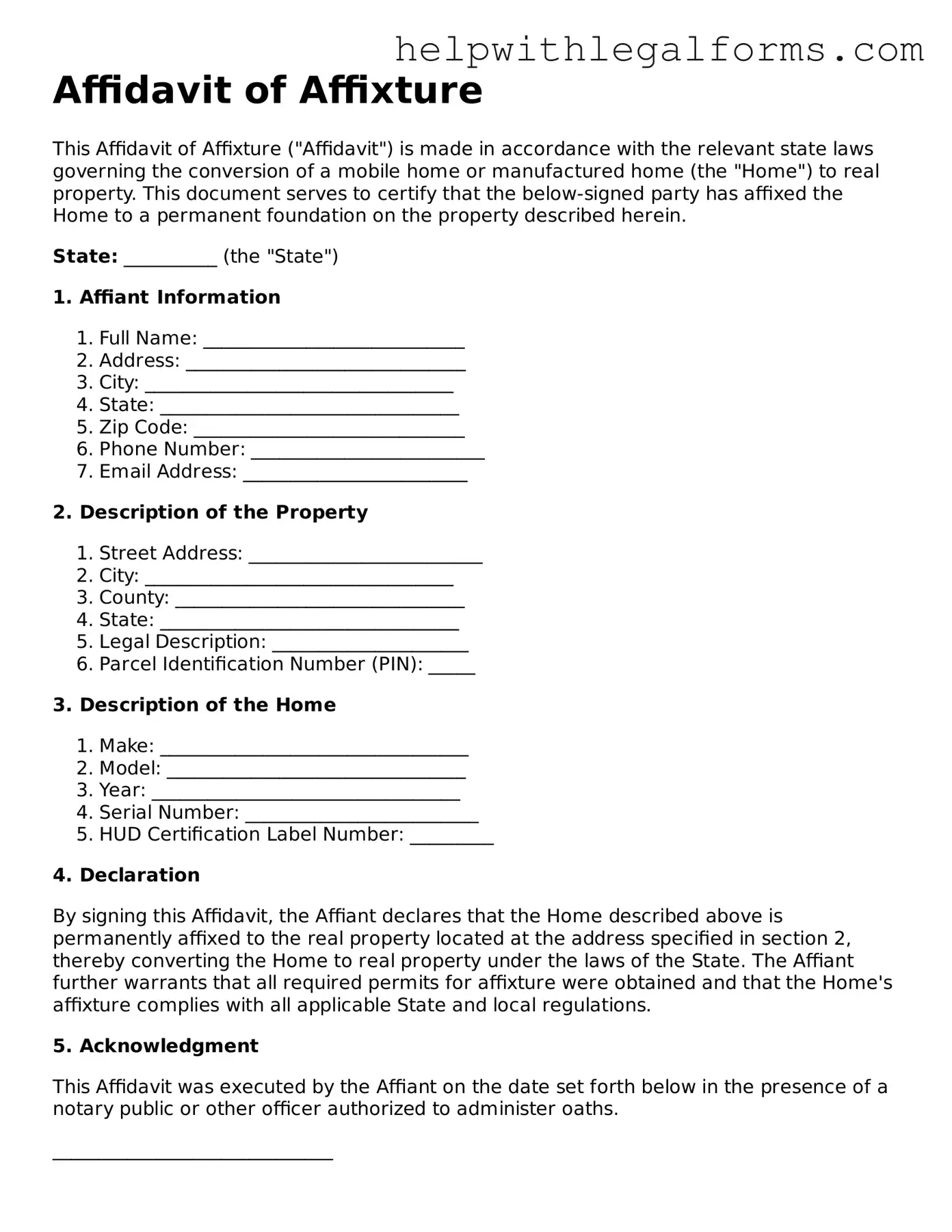What is an Affidavit of Affixture?
An Affidavit of Affixture is a legal document that formally recognizes a mobile home as part of the real property. This process converts a mobile home from personal property or chattel to real estate, making it a permanent fixture on the land where it is placed.
Why do I need an Affidavit of Affixture?
Completing an Affidavit of Affixture is essential if you intend to finance the purchase of a mobile home through a mortgage, or if you plan to sell the mobile home and land together. It clarifies the legal status of the property, potentially making it easier to finance and increase its marketability.
Who can file an Affidavit of Affixture?
The homeowner who owns both the mobile home and the land it rests on is generally the one eligible to file the Affidavit of Affixture. In some cases, with the proper authorization, a legal representative or agent can file on behalf of the homeowner.
What information is needed to complete the form?
To fill out an Affidavit of Affixture, you will need comprehensive information including the mobile home's make, model, serial number, and year of manufacture. Additionally, details about the land and proof of ownership for both the land and home are required.
Where do I file the Affidavit of Affixture?
Once completed, the Affidavit of Affixture must be filed with the local county recorder’s office or the appropriate governmental body responsible for land records in your area. It's vital to check with local authorities for specific filing requirements or guidelines.
How does the Affidavit of Affixture affect taxes?
After a mobile home is affixed and classified as real property, property taxes apply instead of personal property taxes. This change can lead to different tax implications, including possibly higher property taxes, but it also may make you eligible for tax deductions related to homeownership.
Can the Affidavit of Affixture be reversed?
Reversing an Affidavit of Affixture, thereby detaching the mobile home from the land and reverting it to personal property status, is challenging and often discouraged. It generally requires approval from local governmental authorities and, in some cases, may be legally impossible depending on state and local regulations.
What happens if I don't file an Affidavit of Affixture?
Not filing an Affidavit of Affixture keeps the mobile home classified as personal property. This can limit financing options, affect the ability to sell the home, and may influence the overall value. Additionally, you might miss out on certain legal protections and tax benefits associated with real property ownership.
